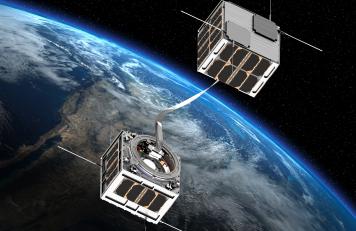As proved in several missions, the Lorentz force acting on the electric current carried by a space ElectroDynamic Tether (EDTs) can be used to propel spacecraft without using propellant. State of the art EDTs involve a bare tape for passive electron collection (anodic contact) and an active device, or a tether segment coated with a low-work-function material, for electron emission (cathodic contact).
A tether segment made of thin film solar cells interposed between the anodic and the cathodic contacts improves tether performances while opening the possibility of using consumable-less electron emitters, like thermionic and electron field emitters that have a proven working record in space. The photovoltaic (pv) segment harvests power from the Sun passively and injects it in the tether-plasma circuit.
Consequently, the proposed architecture eliminates the design dilemma of state-of-the-art tethers: use consumable-less cathodes and low currents or choose a hollow cathode, which needs expellant, and reach high currents.
A detailed analysis of the current and voltage profiles along the tether shows that, if tether dimensions are designed correctly, consumable-less cathodes and high currents are possible thanks to the power delivered by the pv segment. Since thin-film solar cells can be folded and manufactured with any desired length and the same cross-section dimensions as the bare segment, the full bare-photovoltaic tether can be stored in a deployment mechanism, thus yielding a compact device for in-orbit propulsion.
Although both passive and active modes are possible, and therefore spacecraft de-orbiting and re-boost, the first natural application of the idea is the development of a light, autonomous, and consumable-less device for deorbiting satellites at the end-of-life. The idea is fully aligned and presents synergies with the on-going E.T.PACK project, that will develop a deorbit device based on state-of-the-art EDT technology with TRL 4 by 2022.

